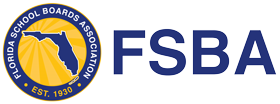This Video Update features Bill Graham discussing the legislative process as we enter the second half of the legislative session. In addition, there is a brief update on the education budget and some of the obstacles outside the education funding areas that legislators will need to negotiate before they can agree on a state budget. Finally, there is a discussion of HB 1145 and SB 1552 that present some troubling changes regarding parental public school choice. (Please scroll down below the video to access information and advocacy tools to assist you in discussing these issues with your legislators.)
The Legislative Process
Now that we have entered the second half of the legislative session, the focus will begin to shift from committee and subcommittee meetings to consideration of bills on the floor of each chamber. In addition, conference committees will be formed to begin work on ironing out differences between the House and Senate versions of key bills — particularly the budget and budget related bills. At this point, any bill that has not been heard in at least one committee is unlikely to survive this session. It is also important to note that, in order to be enacted into law, each chamber must pass an identical version of the bill.
Action requested: If you are not well versed in the legislative process, you may find it useful to review FSBA’s self-guided tutorial Understanding the Legislative Process. Among other things, this tutorial explains how bills undergo 1st, 2nd, and 3rd Reading, the budget conference process, and provides other information that will assist you in staying current with activities during the rest of the legislative session.
Budget Update
As we have reported previously, both the House and Senate education budgets increase overall FEFP funding by about $750 million — about a 4% increase over the current year – with the House budget providing about $20 million more than Senate in total FEFP funding. The main difference between the two education budgets is that the House focuses on increasing funding for specific programs while the Senate provides more funding flexibility. While there are some significant differences between the education budgets, there is a more compelling issue outside the education funding arena that separates the House and Senate: Health Care. Currently, the Senate budget contains about $4 billion to address expansion of Medicaid and to provide health care coverage for low income individuals that earn too much to qualify for Medicaid, but not enough to secure low cost health insurance. The House is firmly opposed to funding either of these programs. Until the chambers reach an agreement on these health care issues, they cannot begin to resolve the differences in the state budget. Further, if the Senate should agree to reduce its health care funding, it may result in reduced funding for education.
Action requested: Please contact your legislators and thank them for their commitment to increasing education funding for 2015-2016. In addition, urge them to hold funding for education harmless from any decision on the health care issues.
Advocacy Tools:
- Comparison of House and Senate Education Budgets — updated 3/27/15
- Senate FEFP Summary — 4/1/15
- House FEFP Summary — 3/26/15
- Understanding the FEFP
- Email Addresses for House Members
- Email Addresses for Senate Members
Public School Choice
Current law authorizes school districts to adopt policies to offer public school choice options that would allow students to attend a school other than their assigned school. 52 school districts offer some form of public school choice option — such as charter schools, magnet schools, alternative schools, and controlled open enrollment. HB 1145 (the Senate companion bill, SB 1552, addresses several topics, including this one) would amend current law require, rather than authorize, each district school board to establish a public school choice “process” (rather than “policy”) that must allow a parent to choose to enroll his or her child in, and transport his or her child to, any public school – including charter schools – in the district, or in the state, that has not reached capacity. HB 1145 and SB 1552 contain additional school choice provisions that are troubling.
Action Requested: Please contact your legislators to explain that, while you support public school choice options in concept, these bills would be disruptive to existing public school choice options and they would, in effect, further the rights of one group of parents and students at the expense of the rights of another group of parents and students. Urge your legislators to ensure that public school choice policies and procedures remain a local option, rather than a state mandate.
Advocacy Tools:
